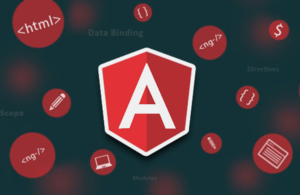Django templates are used to generate dynamic web pages by combining HTML markup with Python code and variables. Templates allow you to separate the presentation logic from the underlying data and business logic. Here’s an introduction to creating dynamic web pages using Django templates:
- Template Syntax:
- Django templates use a special syntax that allows you to embed Python code and variables within HTML markup.
- Variables are enclosed in double curly braces (
{{ variable }}) and are replaced with their corresponding values when the template is rendered. - Template tags are enclosed in curly braces with percent signs (
{% tag %}) and provide control flow, logic, and other functionality. - Examples of template tags include
forloops,ifstatements, including other templates, rendering blocks of content, etc.
- Template Context:
- The template context provides the data and variables that are accessible within a template.
- In your Django views, you pass a context dictionary as an argument to the
render()function, which contains the data you want to make available to the template. - The keys in the context dictionary represent the variable names that can be accessed in the template.
- Rendering Templates:
- Django provides a rendering mechanism to generate HTML output from templates and context data.
- In your views, use the
render()function to render a template with a given context and return it as anHttpResponseobject. - The
render()function takes the request object, template name, and optional context dictionary as arguments.
- Template Inheritance:
- Django templates support inheritance, allowing you to create a base template with common elements and extend or override specific sections in child templates.
- Use the
{% extends %}tag to specify the parent template and the{% block %}tag to define sections that can be overridden in child templates. - Child templates use the
{% block %}tag to replace or extend the content defined in the corresponding parent template block.
- Template Filters:
- Django provides template filters that allow you to perform various operations on variables within templates.
- Filters modify the values of variables before they are rendered.
- Examples of common filters include date formatting, string manipulation, converting case, etc.
- Filters are applied to variables using the pipe symbol (
|), followed by the filter name and optional arguments.
- Template Tags:
- Template tags provide additional functionality beyond simple variable substitution and control flow.
- Django provides built-in tags for looping, conditionals, including other templates, and more.
- You can also create custom template tags to extend the functionality of Django templates.
Django’s template system offers a powerful way to create dynamic web pages by combining HTML markup with Python code and variables. For more detailed information, refer to the Django documentation on templates: https://docs.djangoproject.com/en/3.2/topics/templates/



